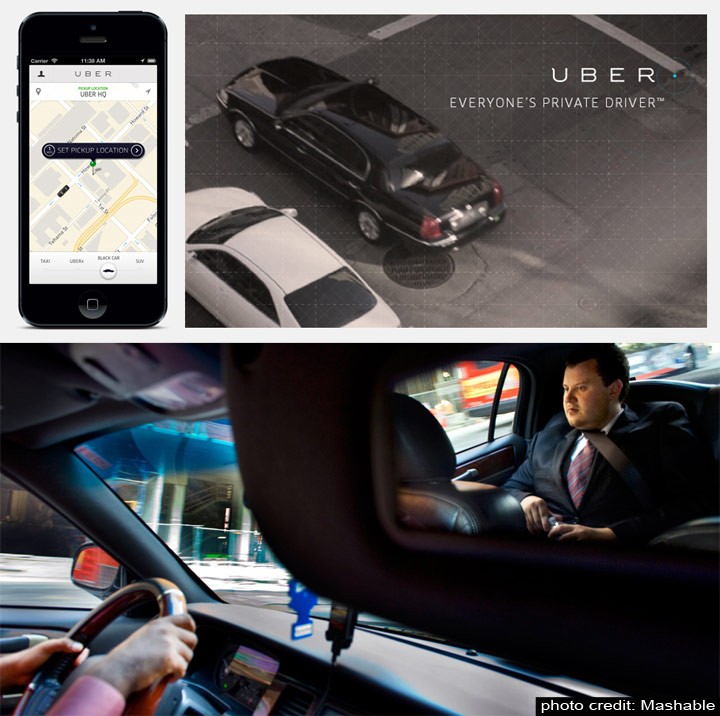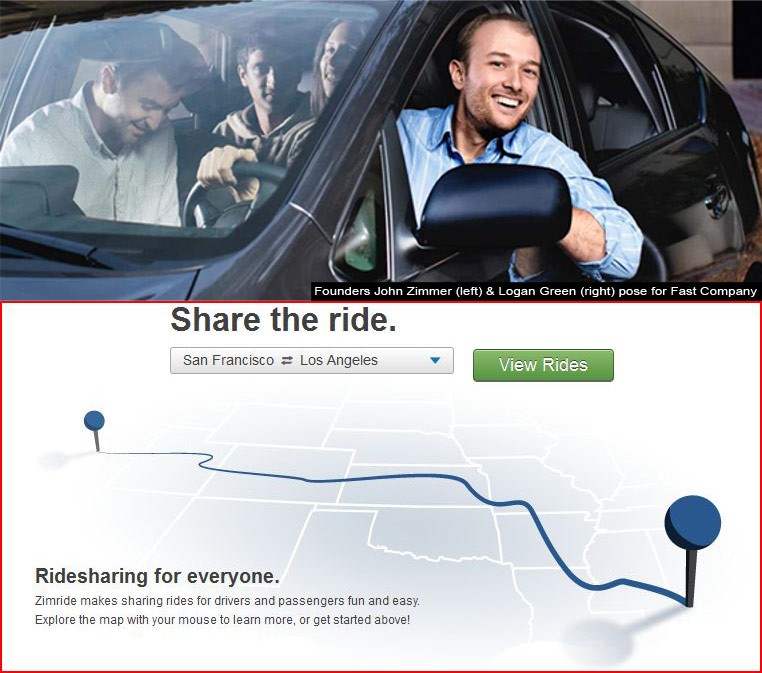Your days of waiting on a cab are in the past. The future is in ridesharing… a not-so new trend that has recently increased in popularity and allows users to request a car service from their smartphones as needed. Companies pioneering this industry include Uber, Lyft, Zipcar, Zimride and Get Around. While each operate under the ride-sharing umbrella, they have differences that make them distinct.
Giants of Ridesharing
[heading size=”22″]Uber[/heading]
Uber is a luxury ride-sharing service that makes getting around easy for its users by being “cashless and convenient.” Similar to a chauffeur service, Uber allows users to ride in vehicles ranging from a yellow cab to a BMW or Mercedes. Once you download the Uber app and become a registered user by inputting personal information, including your credit card information, your ridesharing experience becomes as simple as tapping “request a ride.” From there you’ll see available drivers in your area. Choose one and within seconds you’ll have your driver’s name, number and estimated time of arrival. You’ll be notified when your driver arrives. After that, enjoy the ride to your destination without the hassle of counting exact change or fumbling through your wallet for a debit card, as all charges have automatically been billed to your existing Uber account. Since users have already inputed their payment information, there is no need to confirm payment, and tips are included in your fare.
[heading size=”22″]Lyft[/heading]
Similar to Uber, but more casual is Lyft—easily recognizable by the signature pink mustache on the front bumper of all of its vehicles. Lyft is another ridesharing service that allows you to easily request rides after setting up an account. Differences with Lyft include urging customers to take the front seat and be friendly with drivers, as well as prompting them to pay and confirm payment at the end of their ride or within 24 hours, rather than the automatic payment feature of Uber. Although users are prompted before payments are made, payments are still deducted from the account specified at setup.
[heading size=”22″]Zipcar[/heading]
Unlike Uber or Lyft, Zipcar gives you the privilege of being your own driver. Using their website or mobile app, individual users apply and then receive a zipcard. After receiving a card, you can reserve zipcars from various places across the globe using the website or mobile app. Users can rent a car for anywhere between a couple of hours to a whole day. Once your car is reserved, simply wave your zipcard in front of the windshield and the doors will unlock. Not only do you have the convenience of driving yourself, many cities have designated parking spots for zipcars. To return your zipcar, park at the same location you picked it up and scan out the same way you scanned in—leaving the keys in the car and at least a half tank of gas. Payments for zipcars are also different, as customers choose between monthly and yearly plans or paying by the hour.
[heading size=”22″]Zimride[/heading]
Zimride is the equivalent of modern carpooling. The service connects ridesharing with social networks to help users fill their car or find rides going the same way. Zimride can also tailor passengers and drivers to have similar interests and music tastes in its attempt to “[use] social networks to make real connections.” For users booking a ride, payments are automatically deducted once they hit “book,” but reimbursements are made when drivers flake or do not accept a request. Drivers must first accept passengers and complete their trip before they are paid via Paypal accounts.
[heading size=”22″]Get Around[/heading]
Unlike the other ridesharing services, Get Around allows individuals to rent out personal vehicle for an hourly fee. Users can rent 100 percent insured vehicles, ranging from Toyotas to BMW’s, by downloading the Get Around app. Many people today have more than one car and the one not being used just sits in the garage. Rather than adding more vehicles to the community, Get Around allows customers to use what’s already available, while those renting out their cars make money off of an otherwise dormant vehicle.
Rideshare vs Taxi
Ridesharing has abundantly expanded transit options for travelers across the country. For most, these options mean cheaper fares and a variety of styles in which to travel. For the traditional cab industry however, ridesharing poses a serious threat. With more voluntary chauffeurs on the roads in big cities, Millennials are much more eager to engage with local drivers than traditional taxi services. This has the Taxicab, Limousine and Paratransit Association taking that threat head on by shifting the focus of ridesharing from its convenience to its safety—or lack thereof.
According to Who Is Driving You, an initiative started by the Taxicab, Limousine and Paratransit Association to emphasize safety in public transit in response to the boom in ridesharing, “these amateur drivers are not subject to screening via public agency background checks that demand fingerprints and that are run though police and FBI databases. Passengers have been assaulted yet some of these companies continue to insist their background checks are the most stringent in the industry. They aren’t.” Despite what the Taxicab, Limousine and Paratransit Association is saying, each ridesharing service has an area on its website stating its dedication to rider safety.
Besides safety, concerns have arisen regarding whether or not these independent services are fair to traditional taxi services. In Seattle for instance, legislation was passed that allowed the number of taxi-like vehicles on the streets to be capped at 150. Meanwhile, the same ordinance allows for 200 more taxi licenses to be granted over the next two years, raising concerns about if this legislation leveled the playing field or tipped the scales.
In spite of safety and fairness concerns, the public has been receptive to ridesharing services as an alternate means of transportation. Used correctly, companies like Uber and Lyft have more to offer than convenience. This industry allows unique job creation and the use of face-to-face social skills many of us have forgotten in the digital age.
With the creation of this disruptive service, being self-employed is easier than ever for professional drivers. They enjoy the luxuries of setting their own hours and not answering to a boss, without the hassle of owning a physical business. By actually sharing your ride with others, you cut costs and have the opportunity to meet new people, and possibly make lifelong connections. If common safety practices are exercised by both users and ridesharing companies, these services can offer a convenient and frugal experience when it comes to getting around your town.
[sdonations]2[/sdonations]






